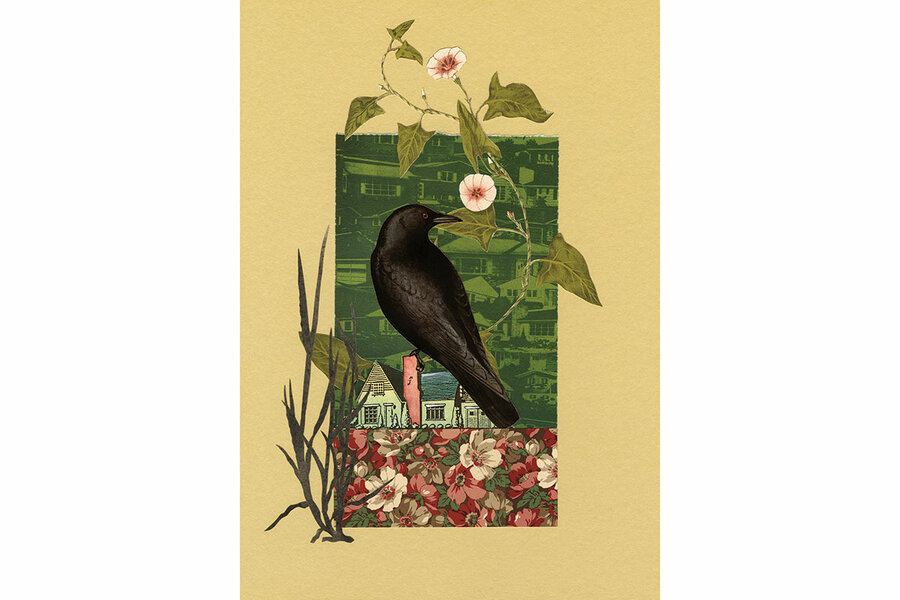‘We are creatures built for joy’: Dispatches from a nature lover
When the urgencies of life give way to rare moments of reflection, many of us look to nature for inspiration – birds at the feeder, darting squirrels, the slow arc of a sunflower bending toward the sky.
Essayist Margaret Renkl captures the experience of gazing out the window or puttering just beyond our doorsteps. Her latest book, “The Comfort of Crows: A Backyard Year,” records her discoveries as an ardent amateur naturalist.
Renkl is best known for her New York Times essays about life in the American South. It’s a big region, but Renkl’s particular lens is Nashville, Tennessee. She often sharpens the ideal of the local writer to a fine point, filing dispatches about what’s blooming, wriggling, or flying within her half-acre lot.
Renkl’s first book, “Late Migrations,” was a memoir that drew substantially on her Times essays, and it was followed by “Graceland, At Last,” a kind of greatest hits of her newspaper work. “The Comfort of Crows” draws on earlier material, too, but to a much lesser degree. Most of the material here is new.
In a nod to a long tradition of nature writing, “The Comfort of Crows” arranges its observations over 12 months, a scheme used to good effect by classics of the genre such as Sue Hubbell’s “A Country Year” and Verlyn Klinkenborg’s “The Rural Life.” It’s a narrative mode that offers the pleasing prospect of the familiar, as the theater of earth and sky plays out in its usual four acts of winter, spring, summer, and fall.
In “The Comfort of Crows,” though, we’re quickly reminded that the ancient march of the seasons isn’t to be taken for granted. “The problem is that these once-predictable patterns keep getting upended,” Renkl tells readers in a reference to phenomena linked to climate change. “It can be ninety degrees one winter day and drop below freezing that very night.”
Although she concedes that a nature lover’s front-row seat to such disruptions “can be a form of self-torment,” Renkl’s book isn’t a uniformly sad one.
“In this troubled world,” she writes, “it would be a crime to snuff out any flicker of happiness that somehow flames up into life. We are creatures built for joy.”
As the title “The Comfort of Crows” suggests, Renkl finds joy in unusual places. She’s thrilled, as any sentient soul would be, by iconically beautiful sights. Renkl revels, for example, in flowering dogwoods, redbuds, and other trees so heavy with spring blooms that “every time it rains, the streets are paved with petals.” But she seems to understand that crows, which “don’t nest in plain view as the bluebirds do, or stand on the fence posts and sing like the mockingbirds,” are more of an acquired taste.
Renkl loves crows, she decides, because “I see in them my own kind.” Like people, crows appear to have a capacity for play, and they retain a family structure that looks a lot like a human household. Even so, Renkl admits, loving crows “is sometimes a struggle, especially during the breeding season, when they poach the young from songbird nests to feed to their own young.”
But as she notes elsewhere in the book, crows and other entities in the natural world aren’t living their lives for our approval. For Renkl, this abiding reality is a liberation. “The natural world’s perfect indifference,” she tells readers, “has always been the best cure for my own anxieties. Every living thing – every bird and mammal and reptile and amphibian, every tree and shrub and flower and moss – is pursuing its own vital purpose, a purpose that sets my human concerns in a larger context. ... The earthworms beneath the soil haven’t the least idea of the frets that pluck at my heart. In their rest, I find rest.”
Renkl’s brother, artist Billy Renkl, provides illustrations for the 52 chapters. He often employs a collage approach in which birds and butterflies, plants and clouds subtly interact like treasures framed within a shadow box. Their containment points to our own complicated relationship with backyard landscapes and, by extension, with the planet – namely, that as we seek to hold nature, it’s holding us.
Amid this vast multiplicity of life, a variety evident even within the intimate boundaries of a home garden, Renkl invites us to slow down and take it in, one small miracle at a time. “We were never cast out of Eden,” she writes. “We merely turned from it and shut our eyes. To return and be welcomed, cleansed, and redeemed, we are only obliged to look.”






